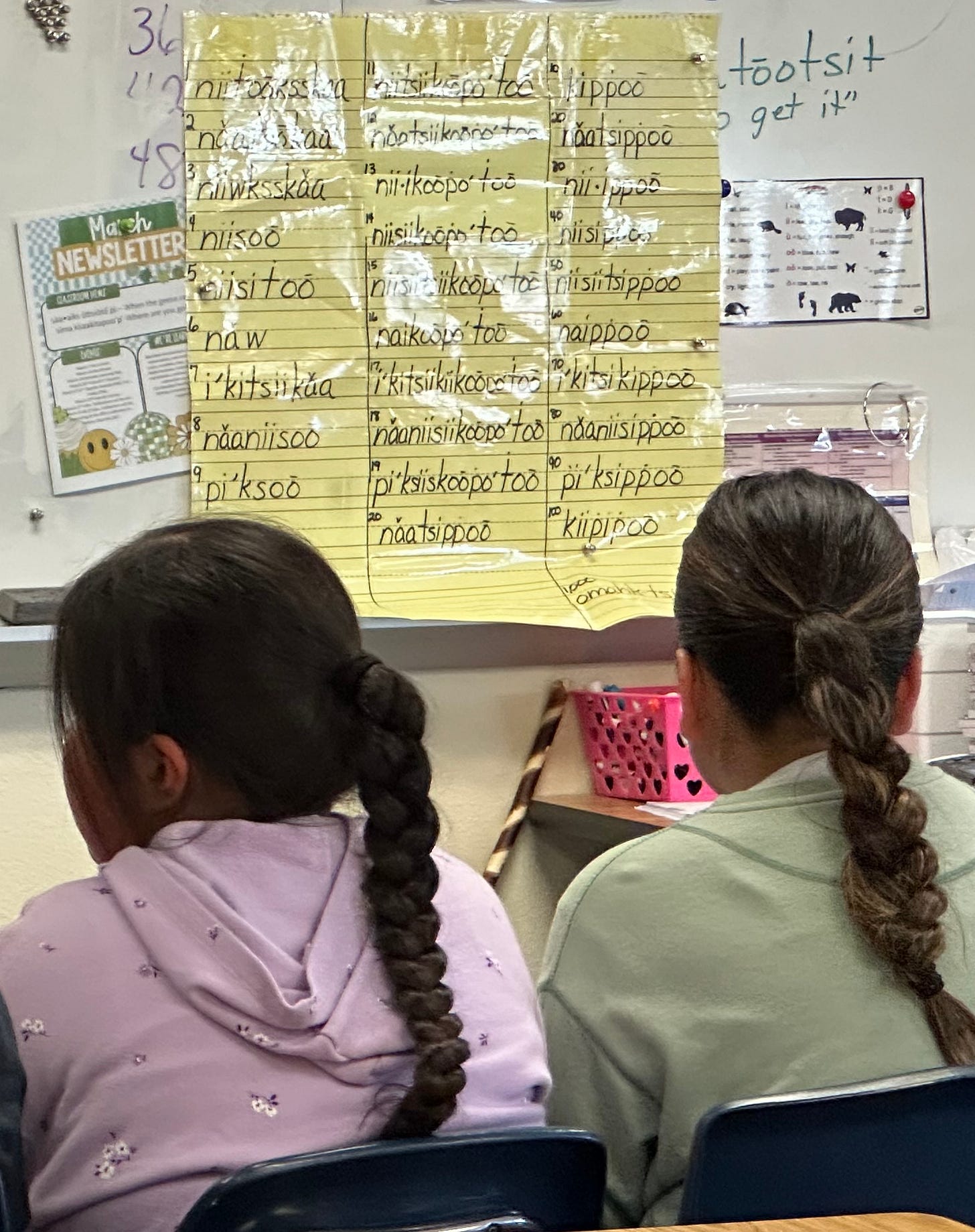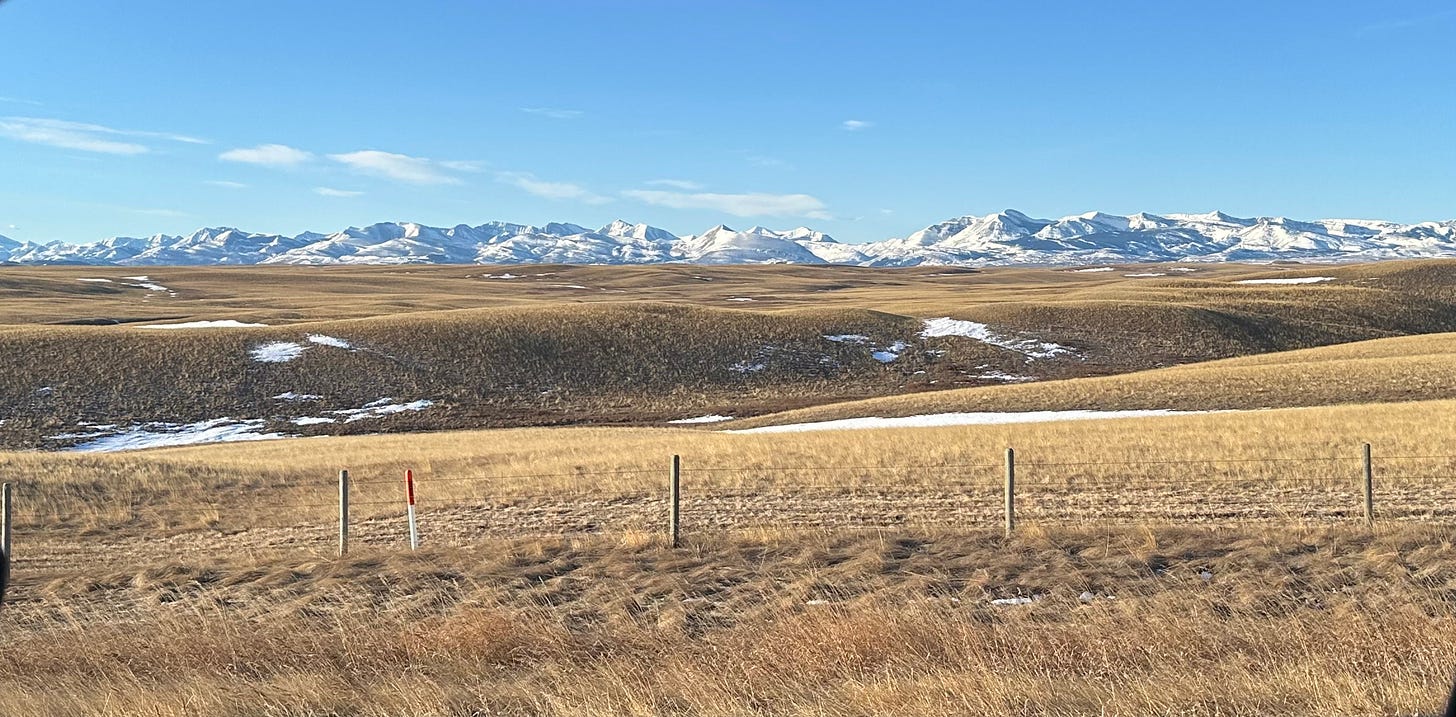Just a couple of weeks ago I came up to Rocky Boy1 to deliver videos we’d2 been working on for over a year, videos of elders telling stories in English and in Cree. Handing over those flash drives produced a feeling of satisfaction3 because we’d contributed, in a small way, to the effort of cultural preservation.
Language and culture revitalization work is also taking place in reservation and off-reservation public schools. While in Rocky Boy, I stopped at Box Elder school4 and followed that with a visit to Browning5 Public Schools, both to record language teachers doing some of the most fantastic classroom work I’ve witnessed. These are Class 7 teachers, Montana’s language and culture specialists. Many Class 7 teachers have a full teacher education, while others are language speakers, often elders, without strategies and classroom management preparation. The project I’m working on involves creating an online resource that Class 7 teachers all over the state can learn from, where teachers share their strategies with each other. Here’s the beginning of the project. So even if you’re a Dakota teacher in Poplar6 or a Blackfeet teacher in Browning, you might be able to pick up a new strategy from a Crow teacher in Lodge Grass.7
Browning has my everlasting love. I can hardly believe my first trip to the Blackfeet Nation took place only just under two years ago, in June 2023. I wrote about it here. After many trips since then, I’m back in Browning again this week to record more classroom teachers. It’s still wintry, though the wind speed today hovered around 10 mph and the sun shone vigorously. I applied chapstick and marveled at my good weather luck.
Today I witnessed a fabulous math class. This teacher, like all the teachers I’ve been fortunate to record, is so impressive! Here are the kids multiplying 4 x 53 in Blackfoot language.8 The audio speaks for itself.
Is that not how language revitalization should sound? Infusing math with words and concepts of the language and cultural community: what a rich education these children are receiving in this teacher’s classroom.
Over the past few weeks I’ve been able to see kids learning verbs with the Total Physical Response (TPR) strategy and making sentences by combining all kinds of words they know, from kindergarten through middle school. Tomorrow I’ll peek into a high school language class. Afterward, I’ll drive east to the Fort Belknap Reservation9 where the tribes’ language project will host its Tuesday night class, and attend in person.
These communities’ tireless efforts to reverse centuries of language destruction persist day after day, week after week, as they must. As I’ve heard multiple Indigenous speakers say, language is culture. And a culture makes a people.
And so, this is the work.
Reservation in north-central Montana, home to the Chippewa Cree Tribe. I’m about to name each of these, so get your map out.
we = Chickadee Community Services, specifically my sister Joan and I, initially recording in January 2024 and then all the translations and edits.
and a flash of panic/despair if I’m completely honest about it
Just off the Rocky Boy reservation, most students are Chippewa Cree
Center of the Blackfeet Reservation in west-north-central Montana, home to the Amskapi Pikuni or Blackfeet
Central town on the Fort Peck Reservation, home of the Nakoda and Dakota (or Assiniboine and Sioux tribes), northeast Montana (aka West Dakota)
Town on the Crow Reservation, home of the Apsáalooke Nation, south-central Montana
Let me say a thing here: Blackfeet is the word for the tribe in the US and the reservation. Blackfoot is a word for the Blackfoot Confederacy as well as the three bands in Canada. Also, many people use “Blackfoot” to name the language itself. And some don’t.
Reservation in north-central Montana, home to the Aaniiih and Nakoda (or Gros Ventre and Assiniboine) tribes





